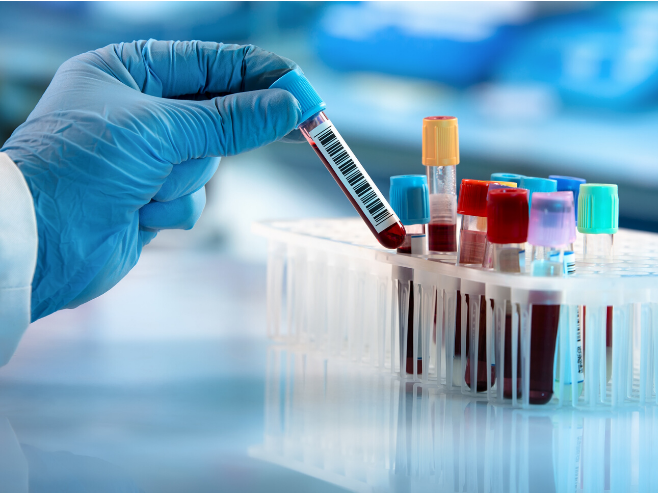The History of the Rh Blood Group & How Genomics Is Changing RhD Typing

The Rh blood group currently includes over 50 antigens, of which the D antigen is the most important in clinical practice. This blood group is the second most important after the ABO system. An individual’s RhD status is described as positive or negative; positive indicates the presence of the RhD antigen while negative indicates its absence.
Below, we explore the history of the Rh blood group and the role of genomics in the determination of RhD status, focusing particularly on the benefits of RHD genotyping for obstetrics patients.
History
In 1939, Philip Levine and Rufus Stetson described the clinical importance of the Rh blood group system through a case of an immunized pregnant woman. The patient experienced an adverse reaction following transfusion of her husband’s blood after giving birth to a stillborn infant. Her serum agglutinated about 80% of ABO compatible human red blood cell samples.
Shortly after, Karl Landsteiner and Alexander Wiener described animal studies that discovered immune antibodies made in rabbits by injecting blood from the rhesus monkey reacted with about 85% of human red blood cells; the same red blood cells that reacted with the antibody made by the woman above. Believing these observations described the same blood group, Landsteiner and Wiener named the Rh blood group after the rhesus macaque. Scientists have since learned that the Rh blood group antigen described by Levine and Stetson is not the same as the one found in rhesus macaques, and was later named "LW" in honor of Landsteiner and Wiener.
The immune case reported by Levine and Stetson was called “erythroblastosis fetalis” to describe the fetal symptoms that result from the mother’s exposure to an antigen absent on her red blood cells but present in her husband and inherited by the fetus. Over time, researchers recognized other antigens make up the Rh system; the “Rh factor” became recognized as the D antigen, now commonly known as RhD.
The clinical significance of the highly immunogenic RhD antigen was quickly realized, in cases of transfusion and in the diagnosis and prevention of erythroblastosis fetalis commonly called hemolytic disease of the fetus and newborn (HDFN).
Obstetrics
HDFN is a condition resulting from an incompatibility between the blood types of the mother and her fetus. Historically, HDFN has been called “Rh Disease” when it is caused by an immune response to RhD with the resulting production of antibodies. In cases where an expectant mother is RhD-negative and her fetus is RhD-positive having inherited the RhD antigen from the father, the mother may become exposed to the RhD antigen on fetal red blood cells during delivery.
This exposure can cause the mother’s immune system to make RhD antibodies, which rarely affect the first pregnancy; however, the presence of these antibodies in the mother’s blood places subsequent pregnancies at significant risk of HDFN if the fetus is RhD-positive. The American College of Obstetricians and Gynecologists (ACOG) reports that without proper screening and prevention, about one out of seven fetuses affected by RhD HDFN will have significant morbidity or mortality.
The ACOG recommends that all RhD-negative expectant women receive injections of RhD immune globulin (RhIG) around the 28th week of pregnancy and again shortly after delivery of an RhD-positive newborn. This therapy is highly effective in preventing RhD alloimmunization, with a success rate of 98.4 to 99%. However, it is critical to adopt current RhD typing practices to make sure all patients who would benefit receive the injection and at that same time to prevent unnecessary use of the drug.
RHD Genotyping
RHD genotyping is changing the way in which RhD status is determined. The first edition of the American Association of Blood Banks (AABB) Standards published in 1958, required serologic weak D testing of donor blood that tested negative for the RhD antigen by direct agglutination. This was to prevent donor blood expressing weak RhD antigen from being transfused as RhD negative.
The 10th edition of the AABB Standards, published in 1981, made the same recommendation for expectant mothers for the purpose of assessing the need for RhIG prophylaxis. Accordingly, serologic weak D positive expectant mothers were considered RhD-positive and thus not candidates for RhIg treatment.
In 2014, a survey by the College of American Pathologists (CAP) showed inconsistencies in RhD interpretation across US laboratories, specifically as it relates to individuals with weaker than expected Rh typing. The AABB and CAP convened a Work Group on RHD genotyping to develop recommendations for assessing the RhD status of patients with weak RhD typing.
The Work Group’s findings are described in Sandler et al. (2015), which recommended that all pregnant women with weak RhD typing be further tested by RHD genotyping. Individuals with Weak D Types 1, 2 or 3 can be managed safely as RhD-positive, and do not need RhIg prophylaxis. To prevent potential alloimmunization, most patients with other RHD variants are managed as RhD-negative.
To read Sandler et al. in full and learn more about the benefits of phasing in RHD genotyping at your practice, click here. You can also visit the National Center for Blood Group Genomics to request this and other testing services.
